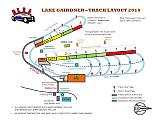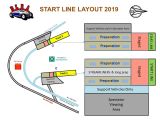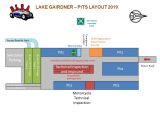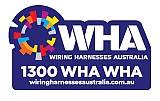Entrants Orientation
Welcome to Speed Week.
Entrant Pack
Here is your Entrant Pack, in it you will find;
- your Entry Form,
- a Technical Inspection Form,
- your Entrants Wrist Band and Crew Wrist Bands (put them on now),
- a Speed Week program (please read it, especially Code of Conduct),
- a Medication Precaution information brochure,
- a Testing information brochure,
Drug and Alcohol Testing
The DLRA conduct random drug and alcohol tests of entrants and officials. These tests are conducted away from the competition and general public to give those being tested some privacy. Please read the brochures included for information about the testing procedures and options for those being tested.
DLRA Competition License
The DLRA runs a graduated licensing system.
- Starting with your current drivers license (E) or competition license to 125 mph (D), then 150 (C), 175 (B), 200(A), 250 (AA), and 300 plus (Unlimited).
- To graduate to your next license, you must make a declared license run, where you will be observed by officials. (You need to notify the Pre-Stage Marshal, so that it gets recorded in the timing system).
- NOTE: You cannot make a qualifying run or a record attempt on a license run.
- You are not permitted to go faster than the license you are qualifying for, eg. if you have a 125 mph license you can only go to 149 mph, unless in it a license run where you can add +/- 5 mph.
- You must get your license signed by the Race Director or the Clerk of Course BEFORE you make your next licensing run. Remember to get your timing slip first.
- For vehicles that cannot run faster than 125 mph, that's OK, we will sign you license off for your highest speed at the end of the week.
- If this is your first event you will be given your DLRA License as part of your Entrant Pack.
175 mph License for cars
When entrants are driving cars and are making their 175 mph license run, they must be observed using their parachute. No parachute, no pass. Try again.
MOST IMPORTANT: The method for deployment of a chute is as follows; Just after going past the mile marker, pull the chute. Most importantly keep your foot on the accelerator until you feel the chute grab and the car start to decelerate, only then do you take your foot off the accelerator.
It is advisable to start practicing with you parachute before your 175 mph license run at say 150 mph, so that you are comfortable with the experience.
Log Book
Each vehicle has a Log Book which must be presented with your vehicle at Technical Inspection. The log book represents the history of the vehicle as it has raced at Speed Week and includes any notes or comments made by the Technical Inspectors, especially about things to be changed or updated for next year.
If you loose or forget your log book, you will have to buy a new one from Registration and it will require that your vehicle be subject to a "new vehicle" inspection. i.e. everything is inspected as if it were a new vehicle.
A Log Book will be given to you at registration when you enter that vehicle for the first time.
Pits
NOTE: Speed Limit in the pits is walking pace. Penalties apply.
And that does not mean you can use the area at the front of the pits as a roadway, this is a prohibited area and is a safety buffer from the track.
The Doctor is located right next to the Merchandise Truck in the middle of the pits right at the front.
Technical Inspection is right in the middle of the pits, entry is from the south end.
Pre-Stage
There are two lanes, one for each track, make sure you are in the right lane.
When you are ready to run, proceed to Pre-Stage. Where you details and position in the queue will be recorded.
It is your responsibility to make sure you get recorded on the list.
Vehicles are sent to the start lines in groups of ten at the request of the starter.
If you are not ready to go to the start line when directed or do not move your vehicle up in the line you will simply be put into the next group.
NOTE: Whenever your vehicle is running or in motion there must be someone on or in the vehicle to control it.
Vehicle Preparation Area at the Start Lines
There is a designated area at the back of the start lines for those entrants wishing to re-fuel, add ice or other last minute preparations. Entrants are strictly forbidden from re-fueling in the start line queue, staging area or start line. Penalties apply.
Start Lines
The first vehicle to come down from Pre-Stage will hand the Start Line assistant the group list. Starting sequence is determined from this list, you don't have to make it a race to get down there.
On Track 1 there are four lanes. Lane 1, nearest to the spectators is for support vehicles only. Lanes 2 and 4 are for cars and bikes. Lane 3 is specifically set aside for vehicles that take a lot of time to get ready, typically streamliners and other very fast vehicles. Two reasons for doing this, the first so that they don't slow the other lanes down and secondly because they do not have good turning circles and need to be set up straight in the middle of the track. On the second row back from the start line consider this to be the staging area. This is where you make all your preparations. One row back from the start line will be when the Starters Assistant will do his safety checks, you must be ready at that stage. A lot of time is wasted waiting for people to suit up and get ready.
At the Start Line you are under the direct instructions of the Starter. You do not talk to him, if he needs to, he will talk to you.
On Track 2 there are two lanes for queuing. You can pick either one.
On the second row back from the start line consider this to be the staging area. This is where you make all your preparations. One row back from the start line will be when the Starters Assistant will do his safety checks, you must be ready at that stage. A lot of time is wasted waiting for people to suit up and get ready.
At the Start Line you are under the direct instructions of the Starter. You do not talk to him, if he needs to, he will talk to you.
Australian Records
This year, DLRA records will be recognised as the result of the average of 2 speeds over the SAME MILE.
For more information see DLRA Rulebook section 1.G.
Any runs are considered to be QUALIFYING RUNS until you exceed the current record for your class.
At that time, to then make a RECORD RUN, you must collect your timing slip and proceed directly to impound, do not go back to your pit as this will disqualify you.
Impound is the technical inspection lanes, you must provide your won drop sheets, shade and protection for the vehicle overnight.
At Impound, the Marshall will record your details onto a record certification form and check your speed does exceed the current record. If your are running GAS class, a sample of your fuel will be taken.
You then have 4 hours to work on your vehicle. Then you must vacate Impound and return to collect your vehicle the following morning.
The next day the Impound Marshall will escort all vehicles in Impound to the Start Line.
If you are lucky enough to exceed the current record for your class on your Record Run, pick up your timing slip and return immediately to Impound, the Marshall will update your record certification form and calculate your average speed, if at that time it is considered to be a new record, a Technical Inspector will check your vehicle of compliance with your class. This will include a displacement check. If you are running GAS another sample will be tested.
The Impound Marshall will compete the form and return your copy.
NOTE: New records are only recognised at the conclusion of Speed Week.
The only exemption to this procedure is where entrants are part of a team using the same vehicle. By request they will be given a pass to return to pre-stage on the same day.
Track 1
- Usually reserved for vehicles over 175 mph, but can be used by vehicles requiring a longer run up.
- Timing beams at the 2 mile, 2¼, 3, 4, 5 and 6 mile markers
- Vehicles under 175mph must turn out after the 3 mile and before the 4 mile.
- Only LONG COURSE QUALIFIED vehicles can proceed under speed to the 4 mile and beyond.
- There are marked Exit points every half mile after the 3 mile.
- After completing your run, TURN OUT TO THE RIGHT and continue past the green all clear flag. If you do not go past the green flag the track is closed until your vehicle is removed. Everybody is waiting on you.
- If your vehicle is on fire or you require the assistance of the fire and rescue crews TURN OUT TO THE LEFT.
- Push cars and Tender vehicles peel off to the right of the track and follow the designated pick up road to the far end of the track. NOTE: Speed on pick up road is 100 kph and 60 kph past the pits.
- Push cars and tender vehicles to have their UHF radio tuned to Channel 10.
Track 2
- Is Speed restricted to 150 mph for cars and 175 mph for bikes.
- Timing beams at the 2 mile, 2¼, and 3 mile markers
- The marked Exit point is after the 3 mile, TURN OUT TO THE LEFT.
- After completing your run, continue past the green all clear flag. If you do not go past the green flag the track is closed until your vehicle is removed. Everybody is waiting on you.
- Tender vehicles wait in the spectator area for entrants to return, unless the vehicle requires a tow or pick up there is no need for tender vehicles to enter the return road.
- Push cars and tender vehicles to have their UHF radio tuned to Channel 10
Technical Inspection
Go to Technical Inspection now, take your vehicle, all your safety equipment, entry form, technical inspection sheet and log book. You must also present your kitted out tender vehicle for inspection complete with flashing light, UHF radio, 2.5 kg fire extinguisher and spill kit.
Once you have passed Technical Inspection bring the SIGNED Technical Inspection form back to registration and you will be given an Inspected Sticker, which must be place on the front of the vehicle where the Starter can see and read it.
Now you are ready to go racing.
Support the DLRA
- Promote your business by advertizing in the DLRA Newsletter
- Sponsors Information













